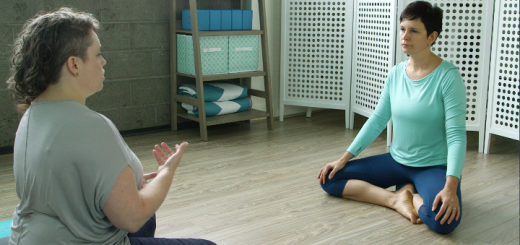Three steps to effective yoga practice design
4Our professional lives seep into our personal lives whether we like it or not. Shawn Achor in his book The Happiness Advantage tells a story of a tax auditor who was having some marital problems. In his effort to fix it, he had made an Excel spreadsheet listing all the mistakes his wife had made in the past 6 years and brought it home. His wife was less then thrilled. “And so it goes, in any profession or line of work. No one is immune. Athletes can’t stop competing with their friends or families. Social workers who deal with domestic abuse can’t stop distrusting men. Financial traders can’t stop assessing the risk inherent in everything they do. Managers can’t stop micromanaging their children’s lives.” (1) As a yoga teacher, I always notice how people around me move and hold their bodies (with all the potential implications for their health); I can see ideas from the yoga sutras reflected everywhere I look; and any time I read a new book, I think of the ways I could apply that information to teaching yoga.
However, in our profession it is often expected that your personal life will reflect the fact that you are a yoga teacher. Those expectations will depend on the mental image that a particular person has of that abstract “yoga teacher” and can include ideas that you “are vegetarian”, “wake up at sunrise”, “don’t get angry”, “practice yoga for hours every day”, “never feel tension”, and so on. While it can be amusing to burst those bubbles of expectation, the reality is that to be effective yoga teachers, we do need to live what we preach, otherwise we are just faking it. This doesn’t mean that we need to try to fit our lives into that vague idea of a perfect yoga teacher, but it does mean that we need to be conscious and deliberate about the choices we make. And on top of that, we need to set up our lives in a way that both supports our teaching and provides inspiration for it. After all, teaching yoga is a creative profession – it flows much better when you are inspired and it relies heavily on your personal experience as a yoga practitioner.
That is why when we talk about designing effective yoga classes, we cannot limit our conversation to sequencing strategies, tool selection and application, and so on. It has to rest on the firm foundation of an inspired life. When your life feels uninspired, crammed, rushed and unfulfilled, it will likely show up in your teaching. When you feel inspired, curious, spacious and fulfilled, your students will pick up on that, as well.
That is why the three main steps that lead to effective yoga practice design are:

Step 1: Creating space to thrive. This means setting up your life in a way that inspires you – it has nothing to do with living in a cave or denouncing all material possessions. It has everything to do with figuring out what it takes every single day for you to feel reenergized and authentic in your yoga teaching. It serves as a foundation and a jump off point for your teaching.
Step 2: Choosing the vital few out of irrelevant many. You spent all this time and effort acquiring massive knowledge about the yoga tradition. It all seems important and necessary. The tricky part is to form a cohesive picture of how it all fits together and figure out how to apply it effectively in yoga practice design. What do you include? What do you leave out? How do you make those selections? Making those decisions consciously every day develops your skills as a yoga teacher.
Step 3: Manifesting your vision. There is a big difference between a perfectly designed yoga sequence on a page and how it gets delivered and received in an actual class. How do you modify your plan based on what you see? How do you get feedback and what do you do with it? What kind of relationships do you establish with your students? Figuring out all those things for yourself reflects your growth and effectiveness as a yoga teacher.
Over the next few weeks we will investigate those steps in detail – tune in!
[jetpack_subscription_form]
References




















This is so inspiring, Olga, beautifully said and shared. I have had my share of these “perfect yoga teacher” moments, and many times have been harsh on myself. We can, with humility, intention, and self-compassion, do our best to “walk the talk.”
Looking forward to your next installment! Thank you.
Thank you so much for sharing these ideas. Your blog has been invigorating my practice and teaching for over a year now, and my students, mostly seniors, are feeling the benefits.
Thank you for sharing your knowledge, creative writing, and honest expression on finding our path in life and as a yoga teacher. I look forward to your emails as if I am waiting to hear from an old friend.
Chris
The comments are my feelings exactly. You are inspiring. Keep helping me❤️